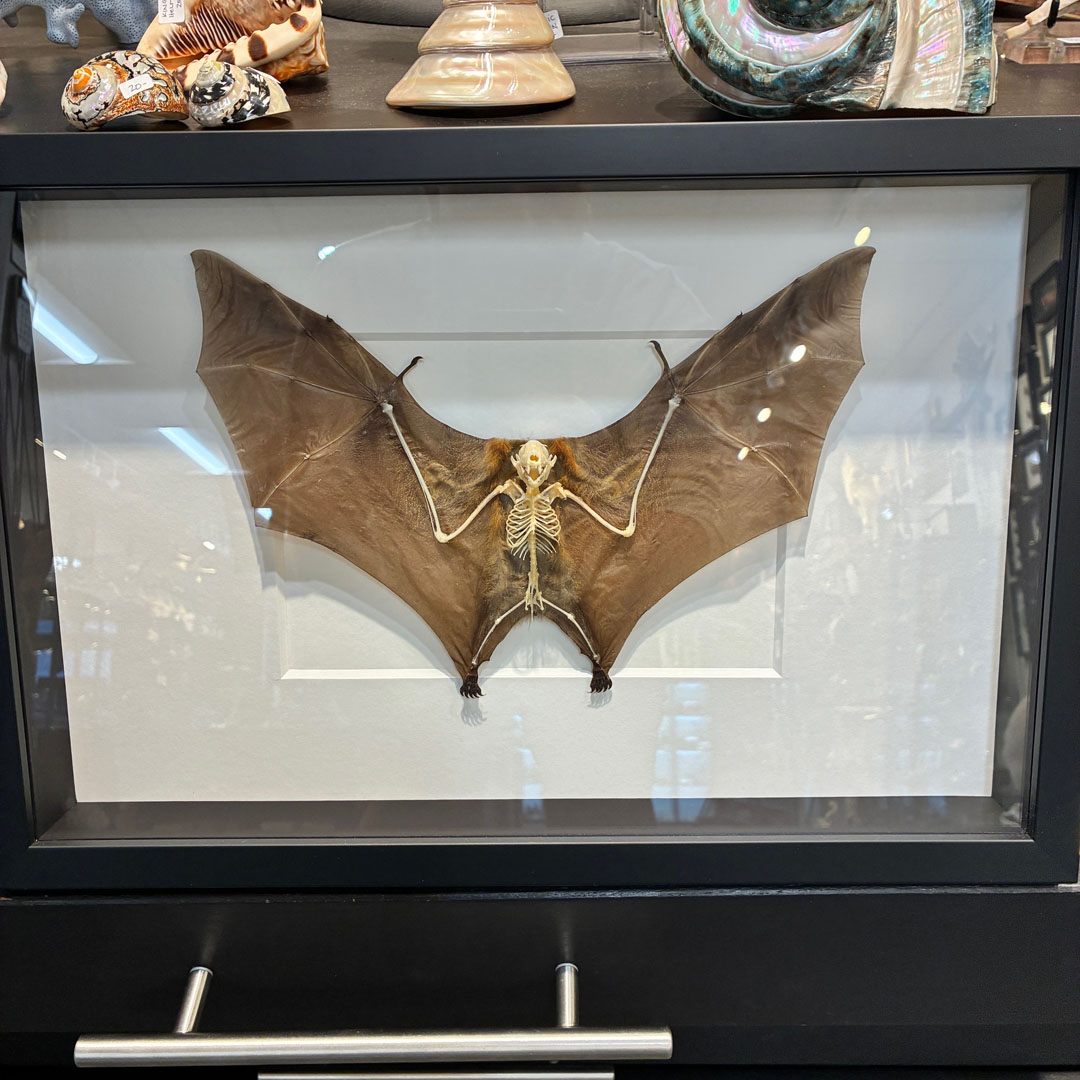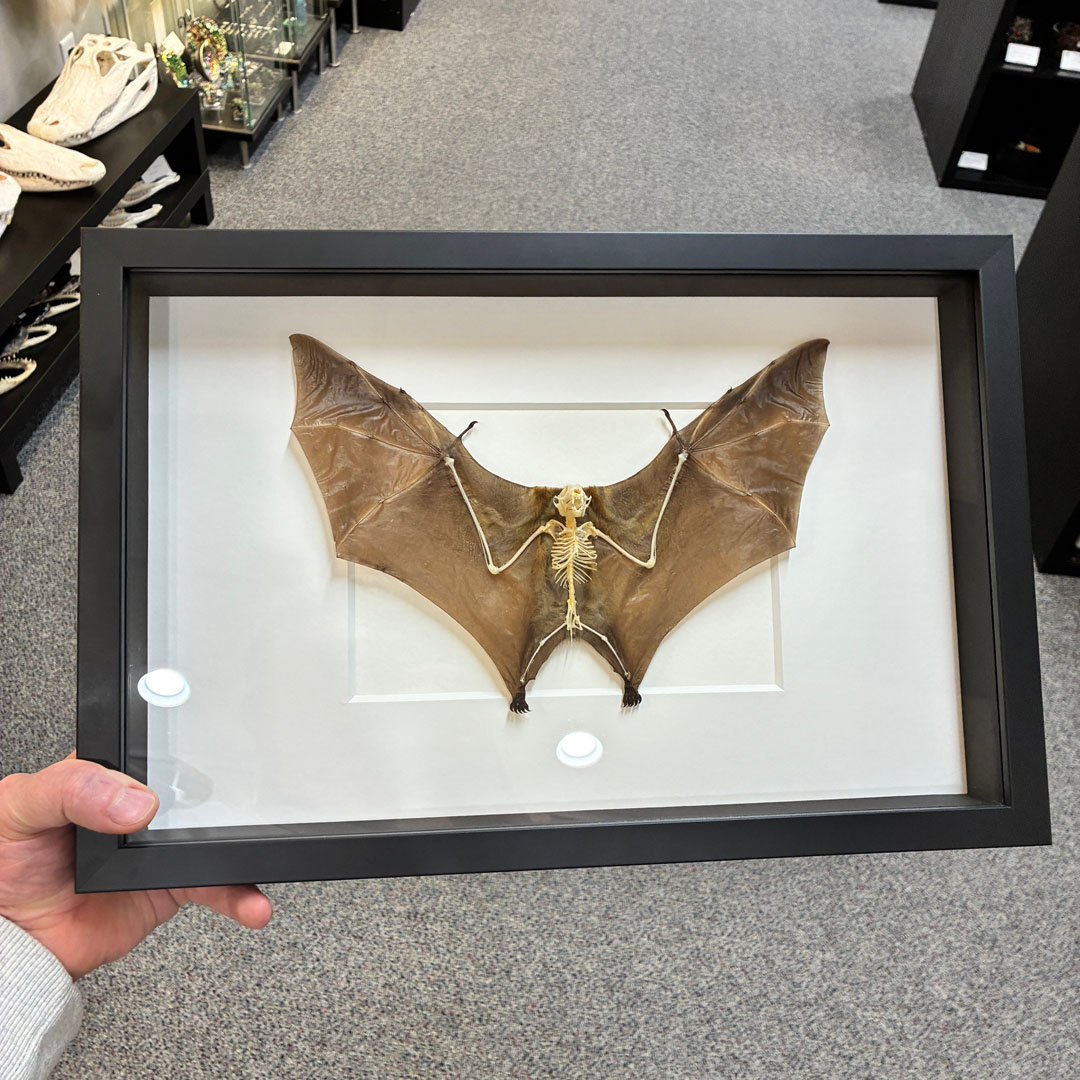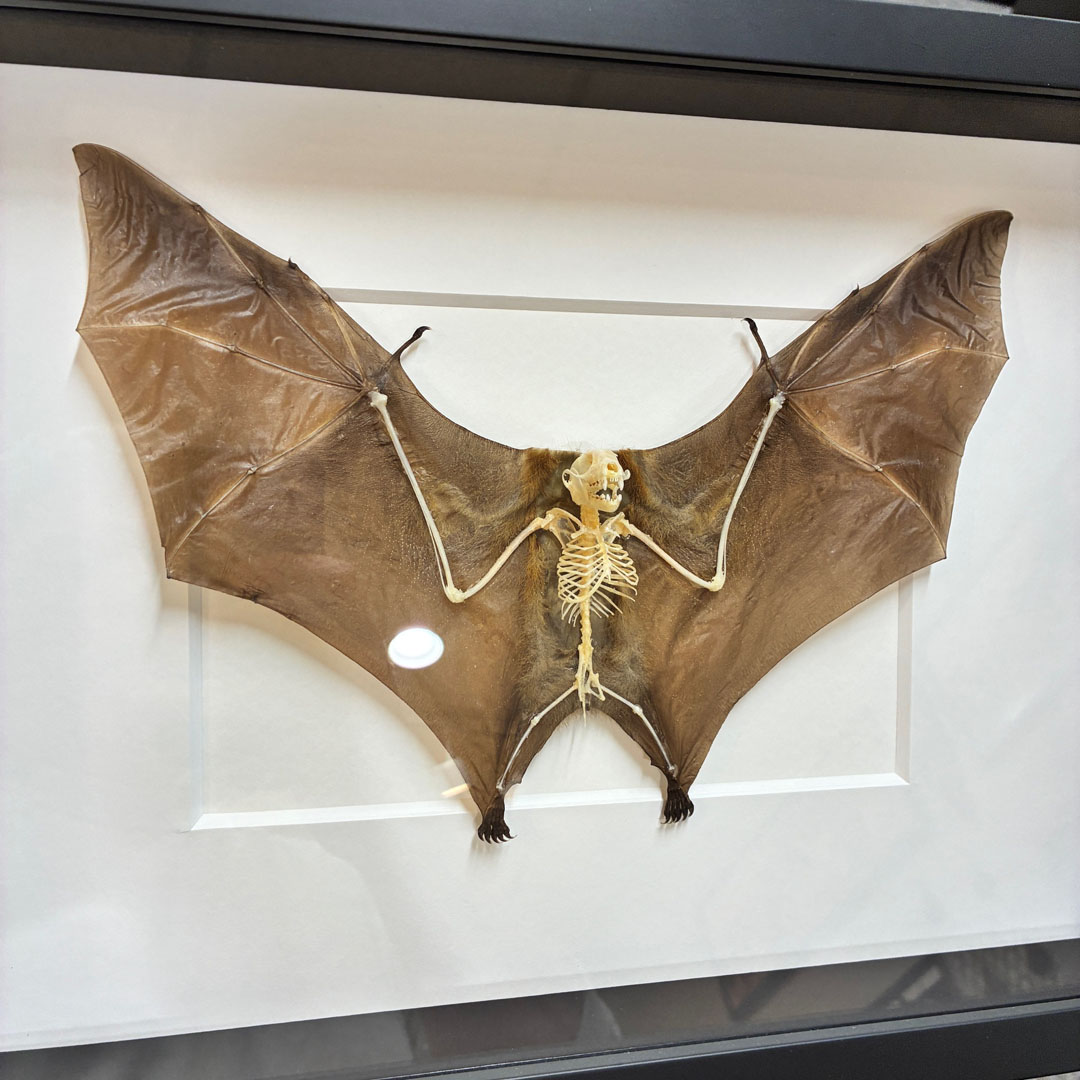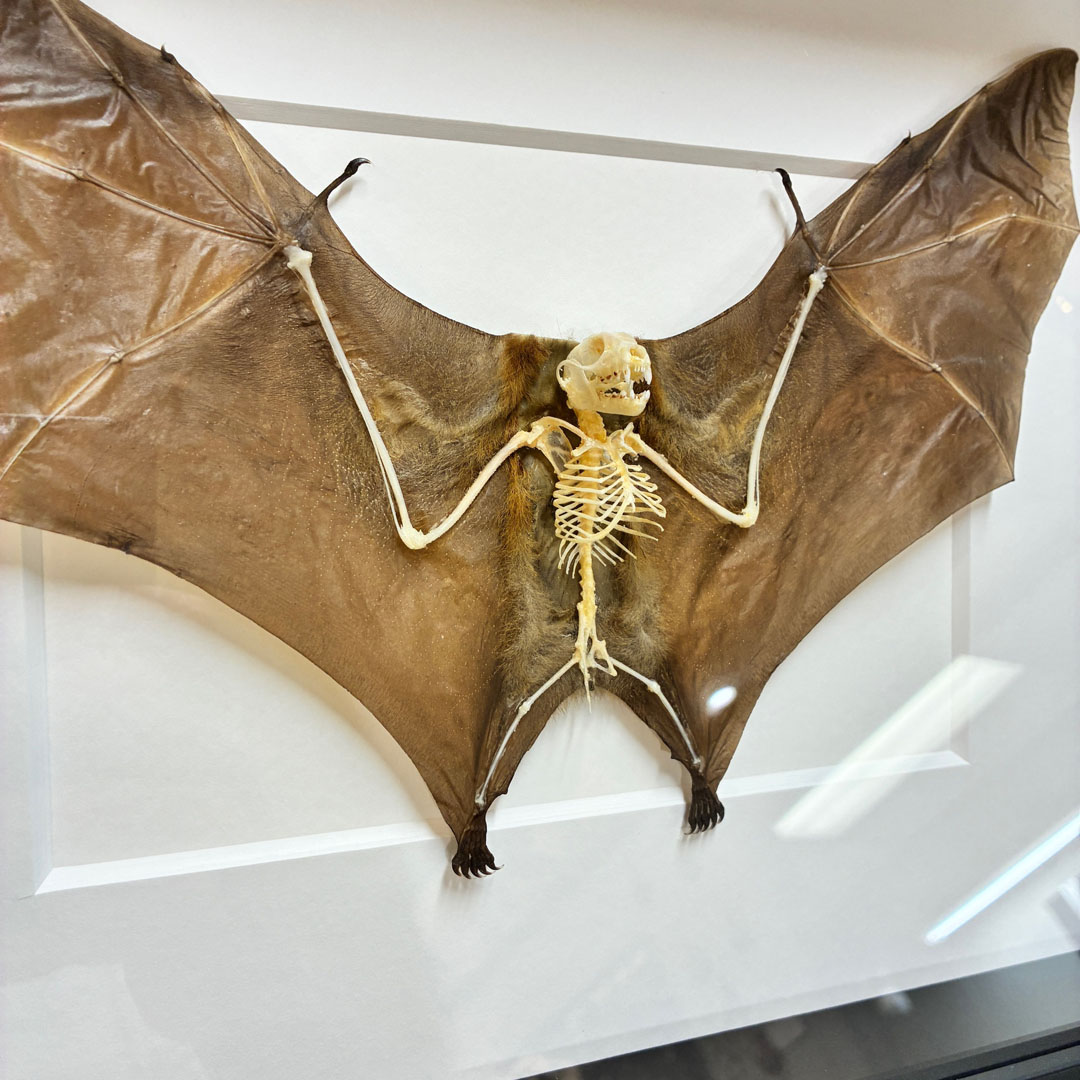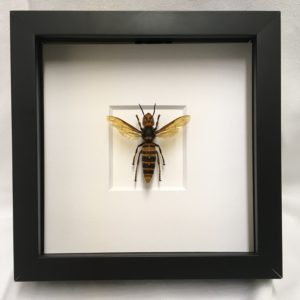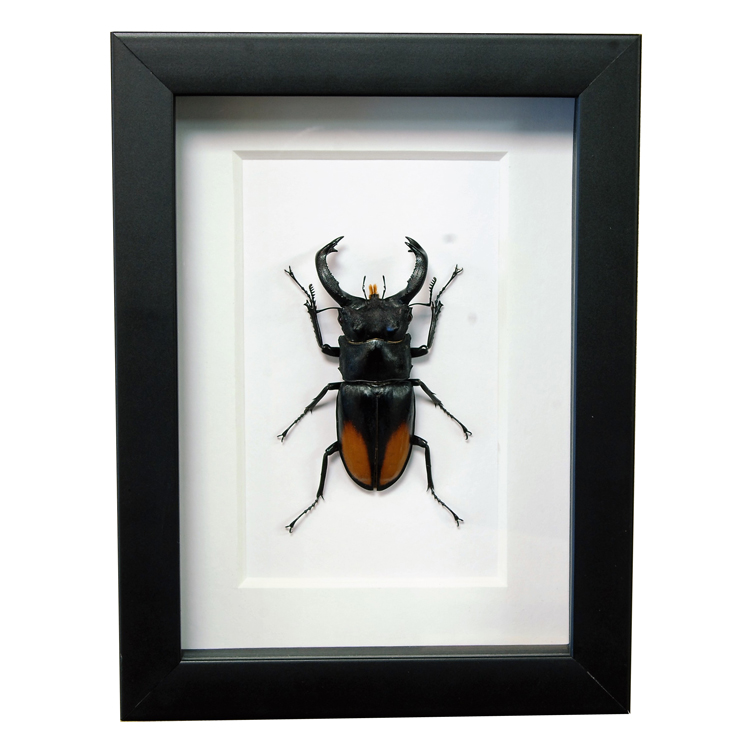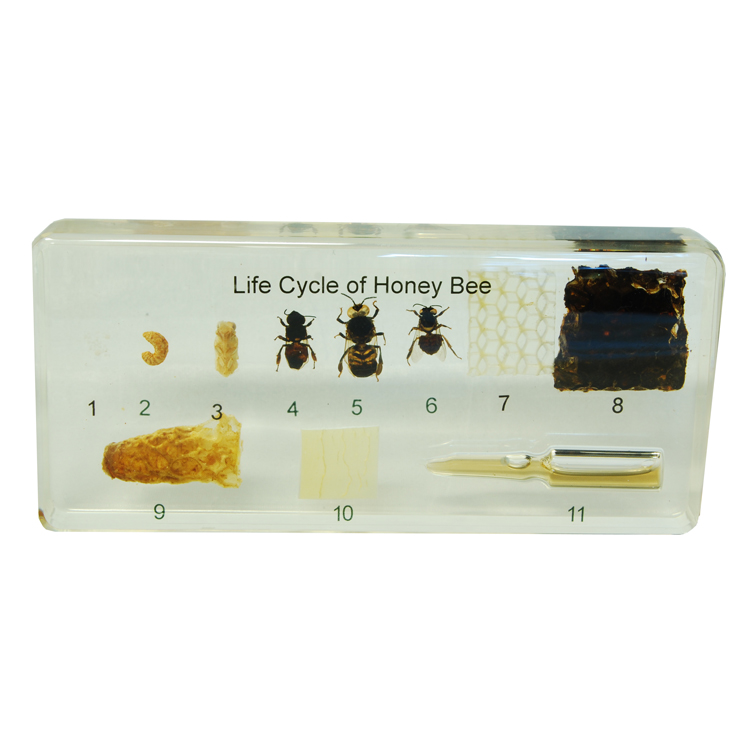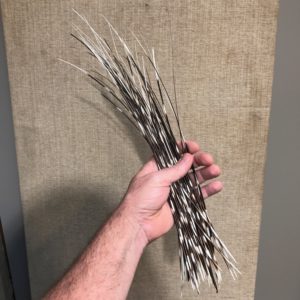Description
Bat skeleton mounted on Bat wings in a Back Wood Frame. The frame with this particular specimen measures 11 3/4″ tall x 17 1/2″ wide x 2″ deep. You will receive this specimen, or one very similar to it, and the frames are almost always the same size. Feel free to reach out to us if you’d like any info on the exact piece you’d receive.
This is a fruit Bat that comes from Indonesia.
These small fruit bats of Indonesia are a unique and fascinating species found in the lush rainforests of Southeast Asia. Known for their small size and delicate features, these fruit bats play a vital role in maintaining the balance of their ecosystems by pollinating flowers and dispersing seeds. Their primary diet consists of various fruits, including figs, bananas, and papayas, which they forage for at night.
These bats are nocturnal, with large, round eyes adapted to low-light environments, allowing them to navigate through the dense forest canopy in search of food. Typically roosting in small groups, they rest during the day in the shelter of tall trees, where they hang upside down. Despite their small stature, these bats have an important ecological role, as they help in the reproduction of numerous plant species by transporting pollen and seeds over large distances.
Indigenous to Indonesia, these fruit bats thrive in the country’s tropical and subtropical climates, where an abundance of fruiting trees provides a reliable food source. They contribute to the health of tropical forests by aiding in plant diversity and forest regeneration. However, they face threats from habitat destruction, deforestation, and hunting, which are gradually putting pressure on their populations. As a result, conservation efforts are increasingly important to ensure their survival.
Despite their gentle nature and small size, these fruit bats face significant challenges. Efforts to protect their habitats and ensure sustainable environments for them are crucial for preserving these important animals and the biodiversity they support. With ongoing conservation initiatives, there is hope for the continued existence of small fruit bats in Indonesia’s vibrant ecosystems.


